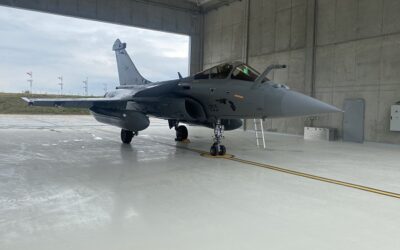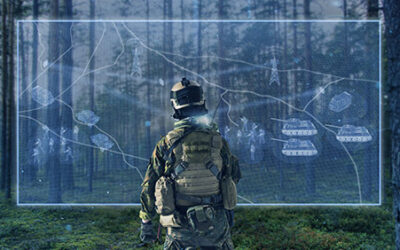Pursuing enhancements and new technologies in key areas of the military communications sector
Cubic Defense is vigorously pursuing enhancements and new technologies in key areas of the military communications sector. One example of the company’s presence in legacy systems is the US Navy’s AN/USQ-167, the first service common data link (CDL) system (CDLS) to implement all standard CDL waveform features to enable network centric warfare.
Mike Huff, Cubic’s Chief Engineer for Airborne Systems, explained the system has been fielded, “for about eight years. It’s used 24/7/365 aboard these aircraft carriers brining data aboard from the P-3, the new P-8, the MH-60Rs/Ss, and occasionally there is a U-2 that supports the battle group – that is how the data gets to the ship.”
On the aircraft side, Cubic delivers the Tactical Common Data Link for the US Navy’s RQ/MQ-8B FIRE SCOUT Vertical Takeoff and Landing (VTOL) Unmanned Air Vehicle (UAV): “We have the system in the aircraft which takes the full motion video (FMV) ISR data, encrypts it and then beams it down the ship in a Type 1, encrypted, broad-band data link.”
Cubic’s development of its FMV capabilities is responding to a burgeoning requirement in the US military community. On Cubic’s business horizon is further bolstering its CDL technology base to allow the Navy to communicate with multiple unmanned air systems – up to 28 in some service warfighting scenarios. The industry expert continued: “So, that’s the future. Everybody in the battle group is connected to the capital ships with a broad band, Type 1 secure data link, sharing video and all the intelligence information they have.”
As part of the migration to next generation communications, the service is moving beyond its legacy, venerable LINK 16 system. Huff continued, “The days of LINK 16 when each user could share 10kbps between each other are rapidly fading. Don’t get me wrong! You still need LINK 16, but the future is every user shares a megabit per second. And all the information one user has is shared throughout the battle group and their information is available to you. That’s where we’re going – broadband.”
Wither NATO and other US allies and friends as the Pentagon moves beyond LINK 16? This next chapter in military tactical data exchange networks finds the US where it was about 20 years with LINK 16, when the Navy created the capability, served as the lead service for its development and pursued joint interoperability with the other services. Not lost on the Pentagon was the need to also pursue a NATO standard (STANAG) to permit Link 16 to be shared with US partners. Fast forward 20 years. Huff noted: “We just won a contract with SPAWAR [Space and Naval Warfare Systems Command] called TAC MOBILE that supports the P-3 and P-8 with tactical mobile operation centers that are set up wherever they are doing expeditionary operations. At the contract kickoff meeting, the Navy said, we have a foreign military sales (FMS) case with Australia, and we’re going to buy additional units from you for part of that FMS case – these systemmes are already being shared with our NATO and other allies.”
“Broadband” resonated throughout this author’s discussion with the industry expert. Huff equated the journey from narrowband to broadband much like the evolution of cellphone technology – but in this case from narrowband LINK 16 to broadband CDL. At the same time, is the expectation to meet the military customers’ requirement to make broadband CDL equipment smaller. Whereas a legacy analogue datalink might be the size of a suitcase, there is the expectation to use materiel with smaller footprints, for instance on the order of a 45Mbps transceiver which can operate from 400Mhz up to 16Ghz in the frequency spectrum. “Ours weighs 1.6 lbs [0.7 kg] and only consumes 24 watts of power. It has incredibly powerful processors – all digital processors,” he said
So while Cubic may be a prime contractor on some of its communications contract awards, its teams with other companies – Northrop Grumman for instance on FIRESCOUT – on others. “Another way we are growing the business is through recent acquisitions,” Huff noted and continued, “We’re targeting C4I companies which will allow us to create ‘a system of products’ rather than components of a system. In the last three years we have acquired four companies – three in the US and one in the UK.”
Marty Kauchak

























